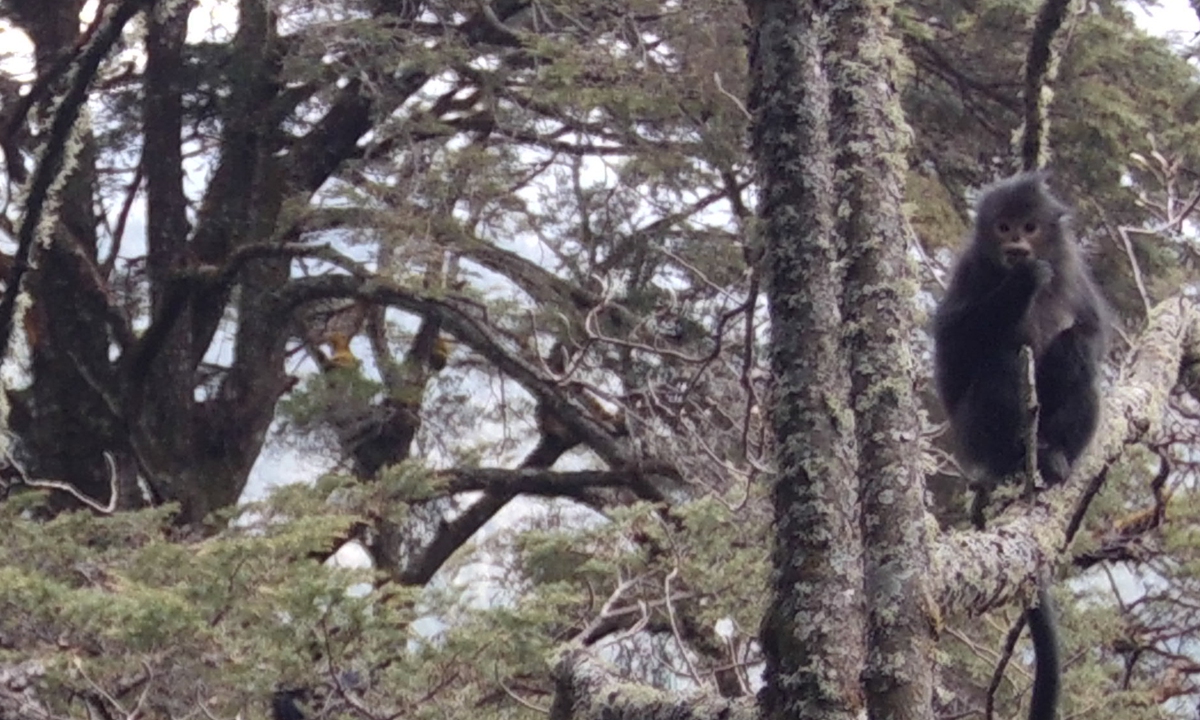
Nujiang Golden Monkey Photo: Courtesy of Huang Zhipang
Researchers have confirmed a new group of the critically endangered Nujiang Golden Monkey in the Duduluo area of Lushui city,
mk Southwest China's Yunnan Province. This marks the third confirmed group of Nujiang Golden Monkey in China, with the newly discovered group comprising an estimated 60 to 80 individuals. With this addition, the total known population of the species in the country has now reached around 360 individuals spread across three distinct groups.
The Nujiang Golden Monkey, known as
Rhinopithecus strykeri, is a first-class national protected wild animal in China, currently found only in Lushui, Huang Zhipang, a professor of Institute of Eastern-Himalaya Biodiversity Research of Dali University, told Global Times on Monday.
"The discovery has increased both the number of Nujiang Golden Monkey groups and the overall population of this species, highlighting the effectiveness of wildlife conservation efforts in China," Huang noted.
According to Huang, as a highland primate species, the Nujiang Golden Monkey plays a vital role in maintaining the balance of the local forest ecosystems, contributing to forest regeneration, and supporting the overall stability of biodiversity.
The confirmation of the new group was the result of a collaborative field investigation between the Lushui management and preservation bureau of the Gaoligong Mountain National Nature Reserve and the Institute of Eastern-Himalaya Biodiversity Research of Dali University.
The research team, which has been conducting monitoring and conservation activities in the Gaoligong Mountains for years, set up a series of field surveys in the Duduluo area based on previous reports from local communities about potential monkey sightings.
Using a variety of methods, including setting up cameras and conducting line transect surveys, the researchers were able to capture images of the monkeys and document their behavior.
Researchers used line transect surveys, setting up 20 transects to measure and photograph signs of the monkey group, such as footprints and feces, and collected samples while documenting surrounding vegetation and terrain features. Based on these findings, they deployed 57 infrared cameras to track the monkeys' numbers, locations, and activity traces. The recovered cameras captured several videos of the monkeys in action.
In the footage, the endearing monkeys can be seen gazing with their large eyes as they immerse themselves in the views of the Gaoligong Mountains.
In December 2011, forest rangers captured the first photo of the Nujiang Golden Monkey in the Pianma area, marking the first confirmation of the species' distribution in the Nujiang region. In 2015, a second group of Nujiang Golden Monkey was discovered in the Luoma area of the Gaoligong Mountain National Nature Reserve.
According to Huang, the newly found Duduluo group was confirmed to be distinct from the other two known groups.
The straight-line distance between the Duduluo group and the nearest groups is more than 30 kilometers. In addition, the research team conducted synchronized monitoring of the Pianma and Luoma groups while tracking the Duduluo group. Activity traces such as feces and movement patterns were recorded confirming that the Duduluo group is a separate population, Huang said.
Looking ahead, the research team's work will focus on promoting monitoring of the Nujiang Golden Monkeys monitoring and talent development. Meanwhile, conducting research on existing populations, and continuing surveys of potential monkey groups and regional biodiversity protection will also be their key work, according to Huang.
In his view, eco-tourism activities can be developed around the Nujiang Golden Monkey in the local area, which should not only "help promote the conservation of regional biodiversity resources but also facilitate the sustainable development and management of these resources."

